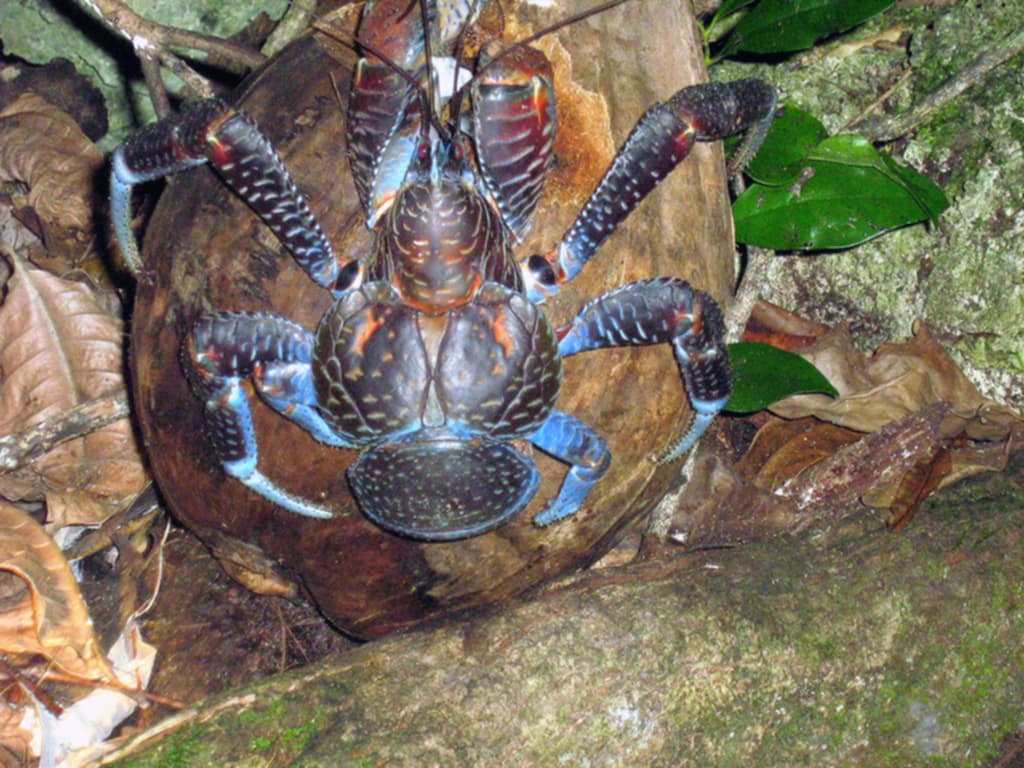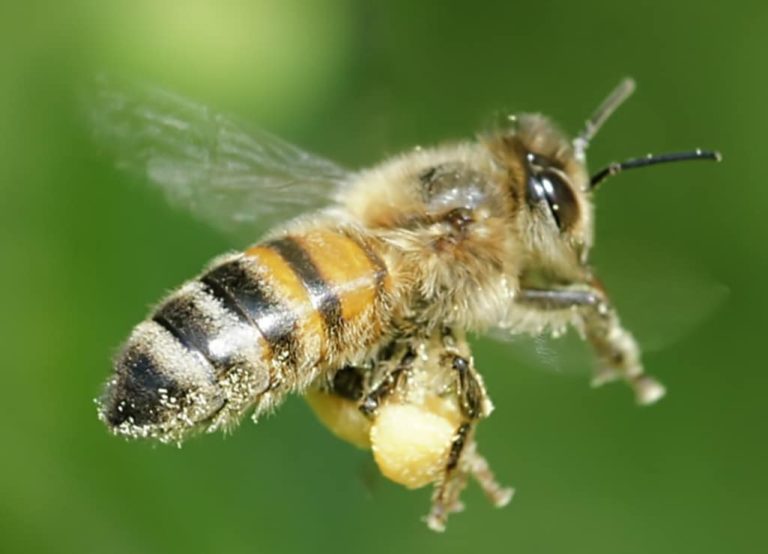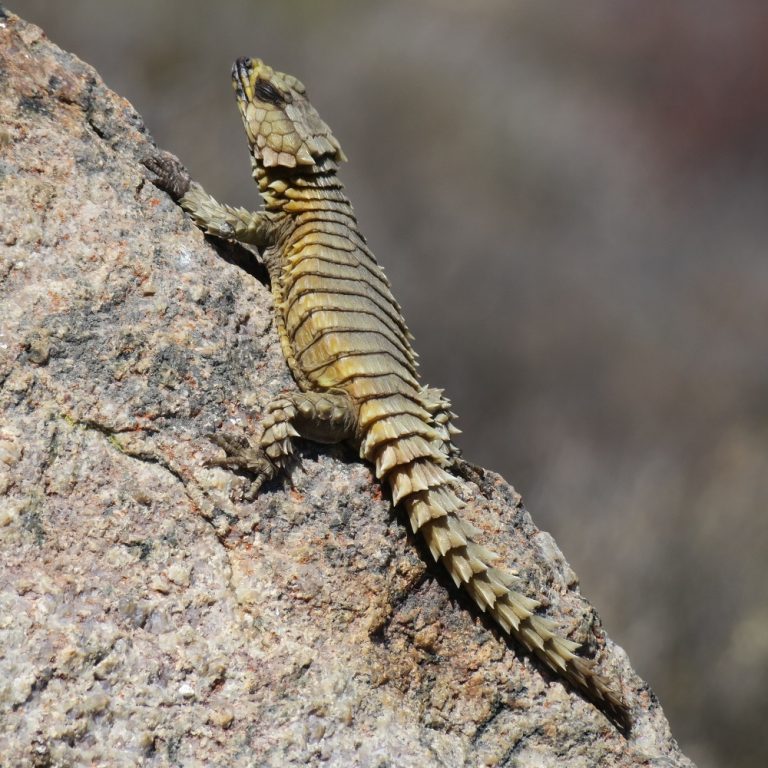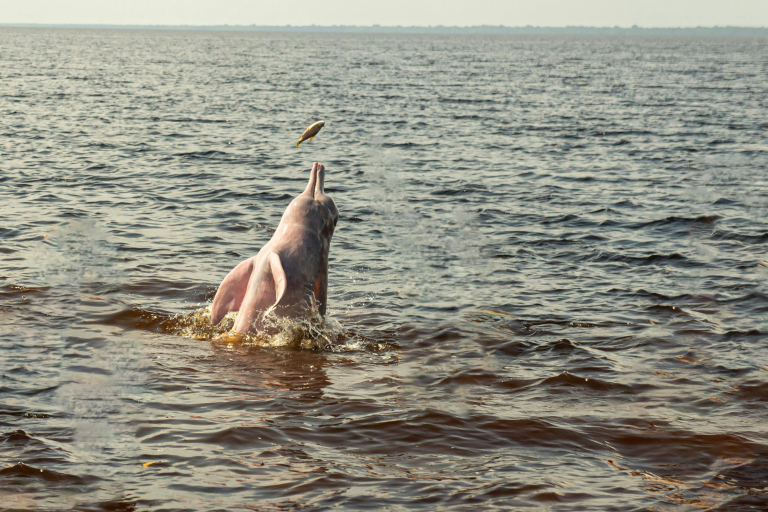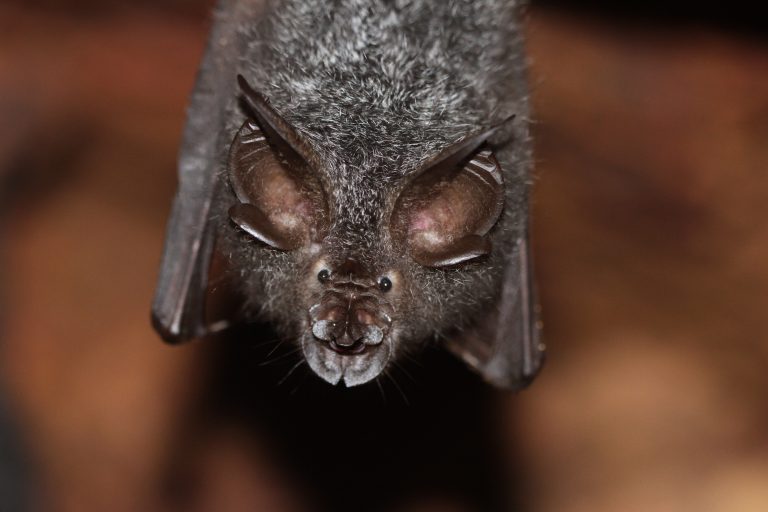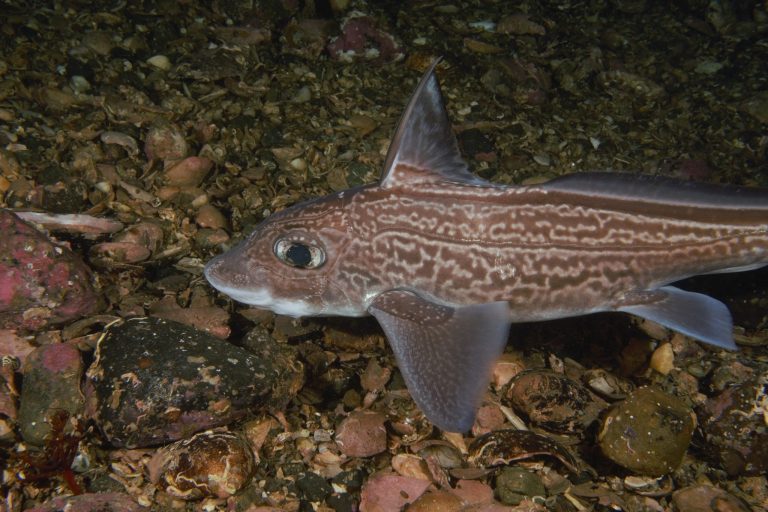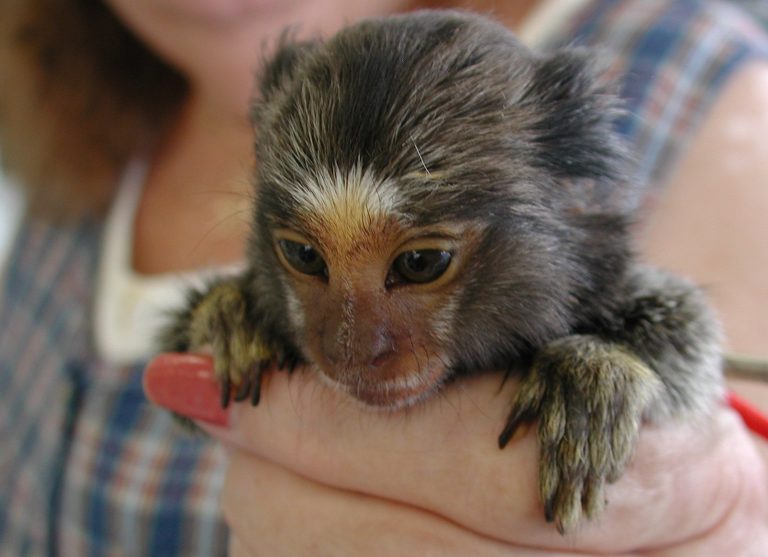The Fascinating World of Coconut Crabs
Imagine a crab so huge that it weighs a little over 4 kilos and its legs spanning up to a meter in width.
It sounds like a monstrous alien from a sci-fi movie, right?
But such a creature does exist, and it’s known as the coconut crab, robber crab, or palm thief, and scientifically named Birgus latro.
In this post, I will bring you some very interesting facts about this intriguing creature.
Where Do Coconut Crabs Live?
Coconut crabs are found across a wide range of islands in the Indian and Pacific Oceans, their distribution extending from the eastern coast of Africa near Zanzibar, to the Gambier Islands, Pitcairn Islands, and Caroline Island in the Eastern Pacific Ocean.

Island Habitats
Coconut crabs thrive on undisturbed islands. They do particularly well in islands where coconut palms are abundant and have rocky crevices and soil they can borrow into.
They can be found in coastal forests and even move up to six kilometers inland from the shore.
Adaptation to Isolated Environments
The isolation of the islands where coconut crabs are found has been crucial for their evolution.
The absence of medium-sized mammals in these islands has enabled coconut crabs to utilize the ecological niche typically occupied by them, exploiting a wide range of resources without significant competition.
This lack of competition has resulted in adaptations such as gigantism, allowing them to grow to larger sizes and consume food like coconuts and large fruits.
Their powerful pincers, useful for cracking coconuts and defending themselves, are a testament to this adaptation.
Coconut crabs have also become highly adaptable, with a varied diet and the ability to occupy various habitats including coastal forests and trees.
Also, they have developed branchiostegal lungs for air breathing, a key adaptation for their terrestrial habitats.
The Unique Characteristics of The Coconut Crab
Let’s look at the unique features and behaviors that set coconut crabs apart from their relatives.
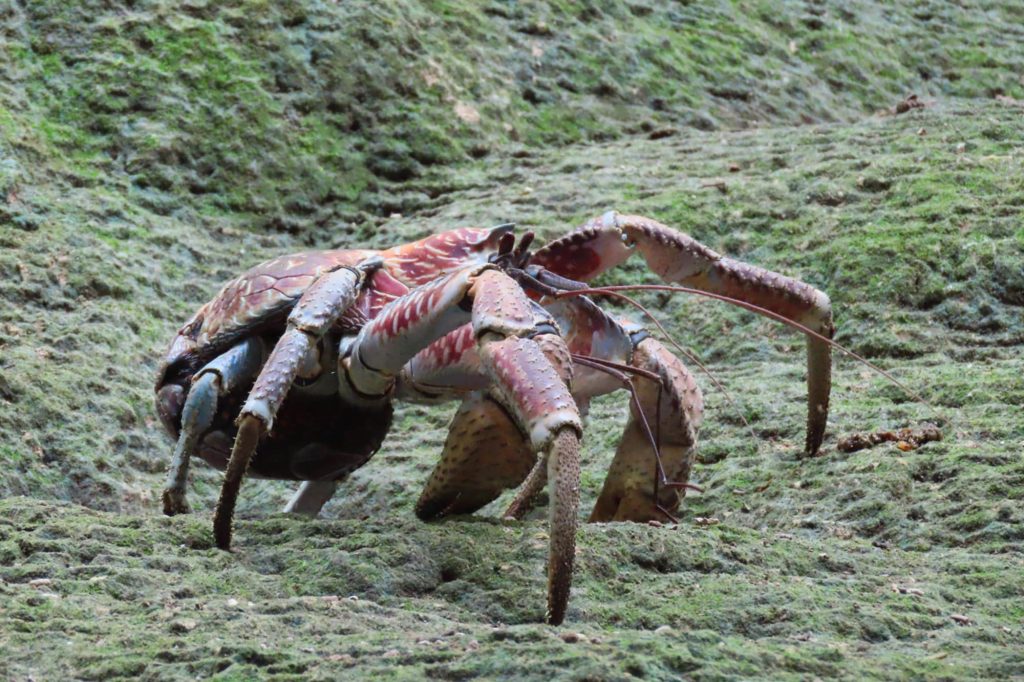
Physical Attributes
They have extremely strong pincers that can exert such a great force. They use them for digging, defense, hunting, and cracking coconuts open.
Their coloration can vary from light violet to deep purple with lighter variegated markings.
Respiratory System
Unlike other crabs, coconut crabs have branchiostegal lungs, lungs adapted to exchange air from the atmosphere instead of water.
This adaptation makes them unable to swim. They can drown and die if submerged in water for too long.
Climbing Abilities
Coconut crabs are agile climbers. They climb palm and pandanus trees to access food.
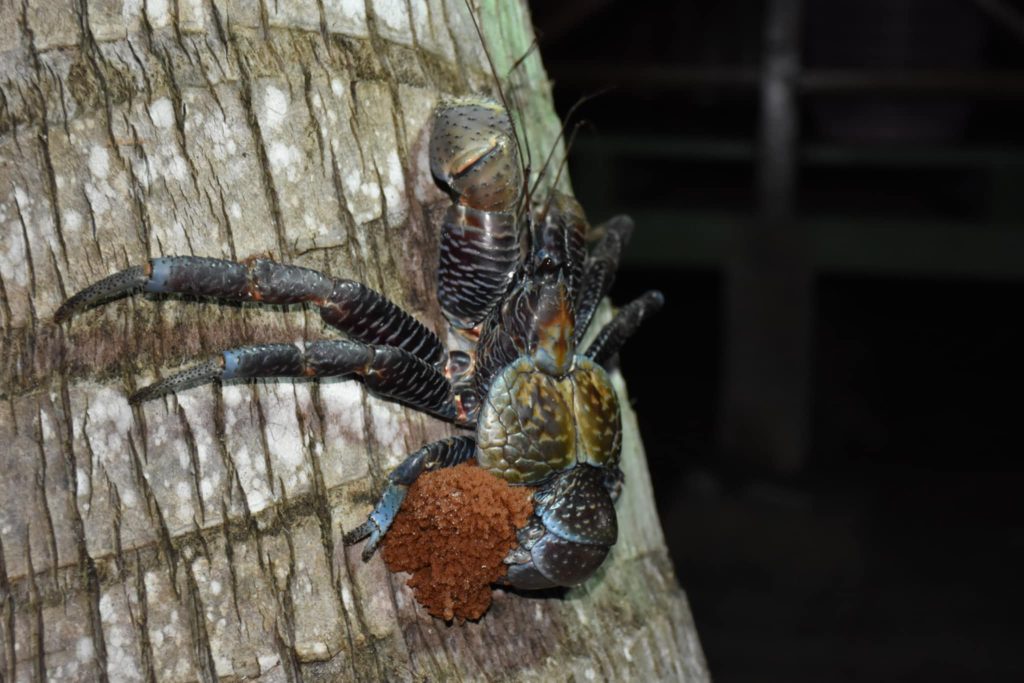
They can survive falls from significant heights. Instead of climbing down, they often descend from trees by falling and landing unharmed. Their hard exoskeletons(shells) and curved, clawed limbs protect them from the impacts of the falls.
Reproduction and Life Cycle
The life cycle of coconut crabs is complex, involving both terrestrial and marine environments.
Mating and Egg-Laying
Coconut crabs mate on dry land, typically during the wet season.
After mating, females move to the sea’s edge to lay their fertilized eggs.
The eggs hatch into larvae (zoeae) that spend 3-4 weeks in the planktonic stage, feeding and growing, before metamorphosing into megalopae.
These megalopae settle on the seafloor and continue to develop.
Once they complete their development, they molt and become juvenile crabs and begin their journey back to land.
These juveniles grow and eventually reach sexual maturity and repeat the cycle.
Growth and Longevity
It takes about 5 years for a Coconut crab to reach sexual maturity
and they can live for over 60 years.
Their slow growth rate and long lifespan make conservation efforts particularly important, as any decline in their population can be hard to rectify, and the effects of such declines can be felt for a very long time.
Diet and Feeding Habits
Coconut crabs are opportunistic eaters. They have a diverse diet that includes more than just coconuts.
Primary Food Sources
Their diet consists mainly of fleshy fruits, nuts, seeds, and the pith of fallen trees.
However, they will eat carcasses and other organic matter when available too.
Coconut Consumption
Despite their name, coconuts are not a significant part of their diet.
They do eat coconuts though, and they are well-known for their ability to crack open coconuts with their powerful pincers.
It can take several hours to crack a coconut open, but it provides them with a good source of protein.
Predatory Behavior
Coconut crabs are also vicious predators.
They hunt rats, other coconut crabs, and even large migratory seabirds like boobies.
They hunt mainly at night, and this nocturnal hunting habit makes them formidable predators in their island habitats.
The Legend of Amelia Earhart and Coconut Crabs
One of the most enduring and intriguing speculations surrounding coconut crabs is their suspected involvement in the disappearance of Amelia Earhart.
The Nikumaroro Island Theory
In 1937, Amelia Earhart, an American aviation pioneer, vanished during a flight over the Pacific, a part of an attempt to fly around the world.
One theory suggests that she might have landed on Nikumaroro Island, where she could have been consumed by coconut crabs.
However, this theory is speculative and lacks concrete evidence.
Even with strong pincers that can inflict serious injury and pain, coconut crabs don’t attack humans unprovoked.
Can You Eat Coconut Crabs?
Yes, they are edible. In fact, they are a significant food source for many island communities.
Culinary Significance
Coconut crabs are prized for their protein-rich meat.
However, harvesting them for food has led to significant population declines on inhabited islands.
Conservation Status and Conservation Efforts
So, how are these gigantic crustaceans fair nowadays?
Conservation Status
Coconut crabs are listed as “Vulnerable” on the IUCN Red List.
Habitat destruction caused by coastal development and agriculture is one of the major threats to them.
The other threat is the vigorous harvesting of them as food.
Declines in their populations can be hard to set right, as a coconut crab can take about 5 years to sexually mature.
As they are animals that have a long life expectancy, the impacts of the declines in their populations can be felt for many years, too.
Conservation Attempts
Conservation efforts to address these threats include educating local communities and tourists about the importance of protection.
Conservation measures such as establishing protected areas, coastal forest sanctuaries, and the prohibition of the use of dogs by hunters are being implemented.
Minimum legal sizes for harvested crabs have been established, and rules and regulations about the capture, sale, and export of coconut crabs are also in place.
There are additional strategies to ensure the viability of coconut crab populations too, such as breeding programs and protecting egg-bearing females.
Conclusion
The coconut crab (Birgus latro) is a unique creature found in isolated island habitats across the Indian and Pacific Oceans.
Characterized by their massive size, powerful pincers, and adaptability to terrestrial life, they have a diverse diet and complex life cycle.
However, they face significant threats from habitat destruction and over-harvesting and are considered “vulnerable” on the IUCN red list.
Their slow growth rate and long lifespan make conservation even more important, and conservation efforts, including the establishment of protected areas and harvesting regulations, have been implemented to safeguard their long-term survival.

